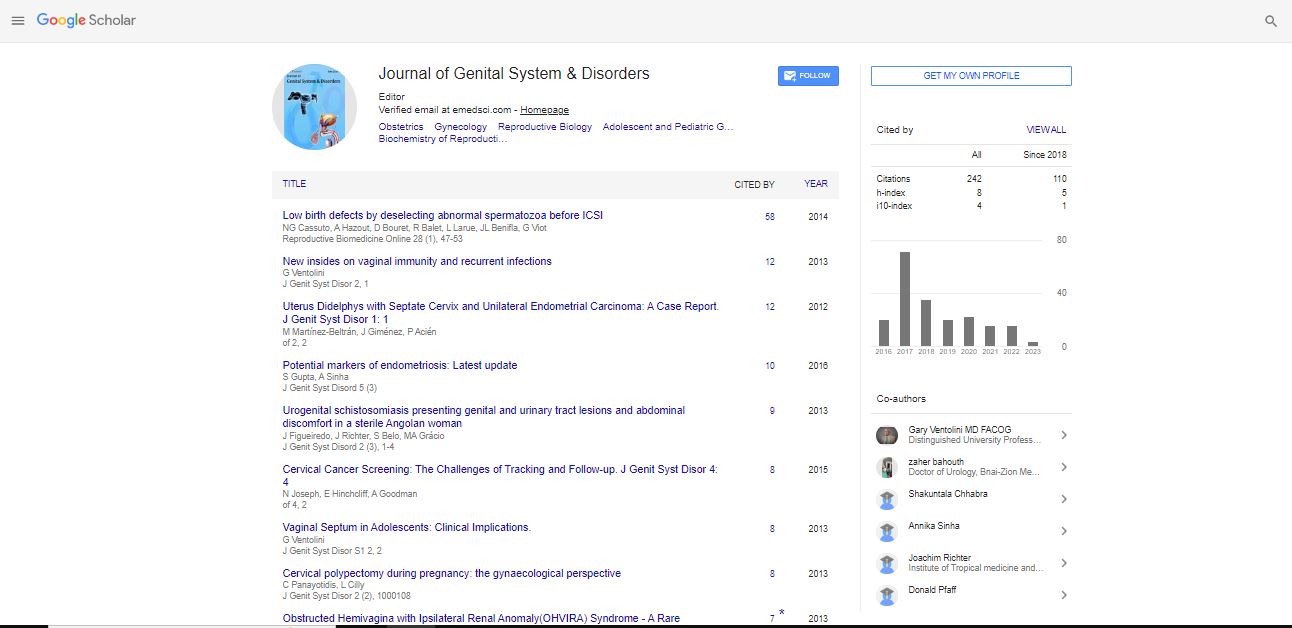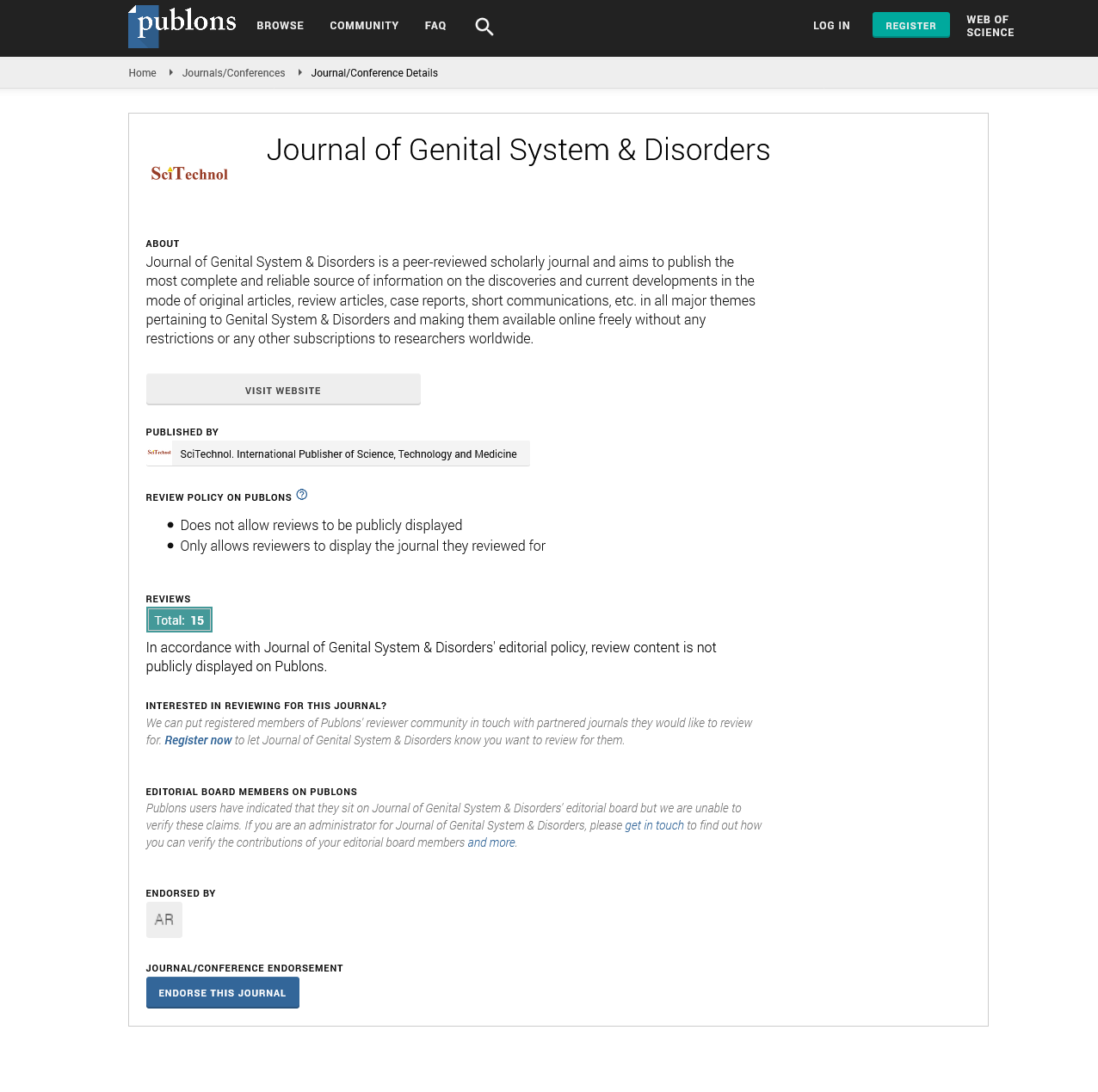Perspective, J Genit Syst Disord Vol: 12 Issue: 2
Vaccination Sphenoid Virus Infection in Women
Tharek Kamesha*
Department of Diagnostic Radiology, Suez Canal University, Suez Canal, Egypt
*Corresponding Author: Tharek Kamesha
Department of Diagnostic
Radiology, Suez Canal University, Suez Canal, Egypt;
E-mail: kamesh12@ hotmail.com
Received date: 11 January, 2023, Manuscript No. JGSD-23-86801;
Editor assigned date: 13 January, 2023, PreQC No. JGSD-23-86801 (PQ);
Reviewed date: 27 January, 2023, QC No. JGSD-23-86801;
Revised date: 18 April, 2023, 2023, Manuscript No. JGSD-23-86801 (R);
Published date: 25 April, 2023, DOI: 10.4172/2325-9728.1000275
Citation: Kamesha T (2023) Vaccination Sphenoid Virus Infection in Women. J Genit Syst Disord 12:2
Introduction
The preferred antibiotics cover Staphylococcus species and anaerobes in addition to the pathogens that cause acute sinusitis. These include levofloxacin, gatifloxacin, moxifloxacin, cefuroxime, cefpodoxime proxetil, and amoxicillin-clavulanate. These infections frequently occur from pre-existing sinus conditions, which are frequently brought on by viral illnesses like the flu or the common cold. Allergens or fungi that cause sinus infections and disseminate into the sphenoid cavities can also cause sphenoid sinusitis. While the transethmoidal method is widely used in situations with non-isolated sinusitis or tumours of the sphenoid sinus, endoscopic transnasal sphenoidectomy is the preferable surgical procedure for inflammatory illnesses isolated to the sphenoid sinus.
A uncommon condition called isolated sphenoid sinusitis can have life threatening side effects such cranial nerve involvement, brain abscess, and meningitis. There is no characteristic headache pattern, despite the fact that headaches are the most prevalent presentation symptom. The investigation excluded cysts of the sphenoid sinus that were isolated. The origin, risk factors, symptoms, signs, treatments, and results of isolated sphenoid sinus involvement were assessed retrospectively, with specific attention paid to the clinical symptoms of fungal sinusitis and pyocele. When treating patients who are thought to have sphenoid sinus illness, a CT scan is a crucial diagnostic tool.
Description
As in our instance, solitary sphenoid sinus illness is frequently discovered by accident during a radiological investigation for unusual headaches. The assessment of patients with primary sphenoid sinus illness should include a nasal endoscopy. It aids in delineating any extension into the nasal cavity and acquiring culture material. A surgical treatment known as a sphenoidotomy is performed when the natural ostium of the sphenoid sinus is in some way enlarged. In endonasal sinus surgery and endonasal neurosurgery, sphenoidotomies can be performed microscopically, endoscopically, or with balloon assistance. The main hazards are brain fluid leak, haemorrhage or infection in the septum area, numbness in the front teeth, the development of a hole through the septum (septal perforation), recurrence of septal deviation, and front teeth numbness.
There is an extremely slim chance that these events will change the nose's outward appearance. A particular paranasal sinus (a hollow space in the bones around the nose). The sphenoid bone, which is located between the eyes and behind the nose, contains two sizable sphenoid sinuses. To prevent the nose from drying up, the sphenoid sinuses are lined with cells that produce mucus. Endoscopic sinus surgery is a relatively common and extremely safe treatment. That being stated, there is a slight possibility of dangers, just like with any surgical surgery. These include: Although significant bleeding is rare, most sinus procedures result in some blood loss. Endoscopic sinus surgery is quite prevalent and is thought to be very safe.
Conclusion
That being stated, there is a slight possibility of dangers, just like with any surgical surgery. These include: Although significant bleeding is rare, most sinus procedures result in some blood loss. Acute sinusitis, subacute sinusitis, chronic sinusitis, infected sinusitis, and non-infectious sinusitis are different types of sinusitis. Typically, a person with sinusitis will have recently experienced an upper respiratory infection, such as a cold. After they start to feel better from their cold, they could start to develop sinusitis symptoms. A sinus is a void filled with air.
 Spanish
Spanish  Chinese
Chinese  Russian
Russian  German
German  French
French  Japanese
Japanese  Portuguese
Portuguese  Hindi
Hindi 
